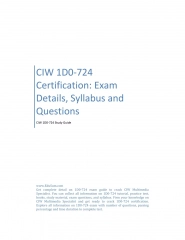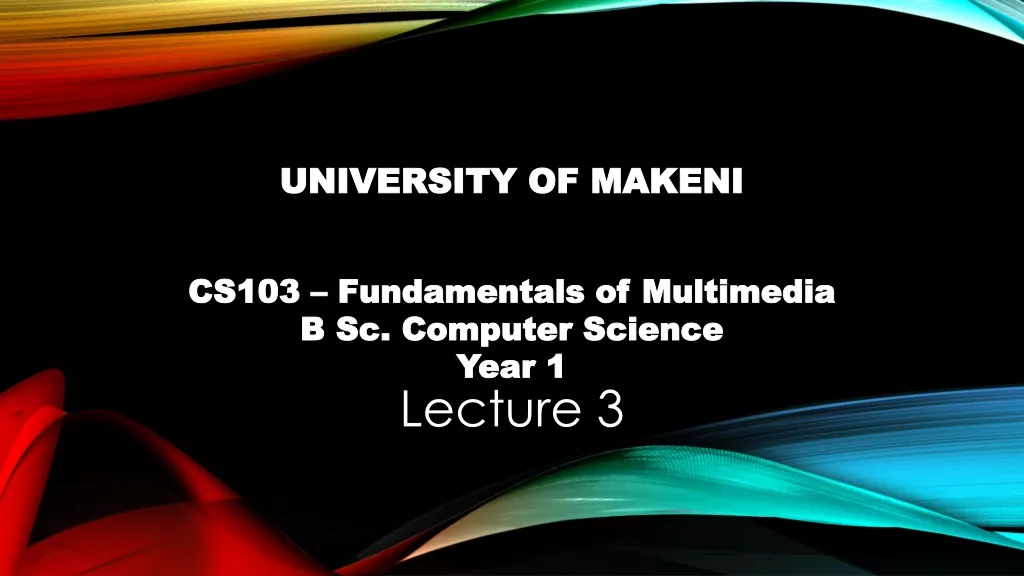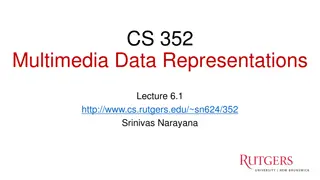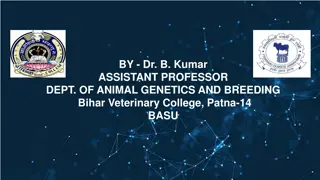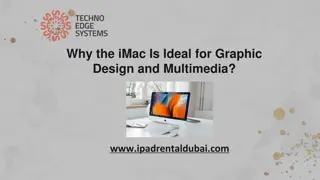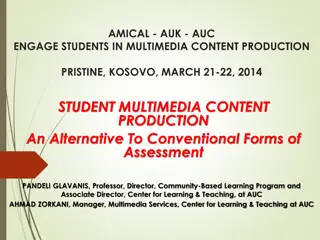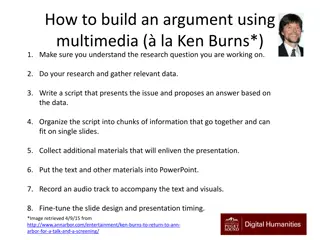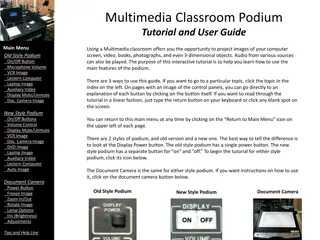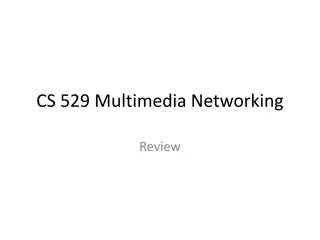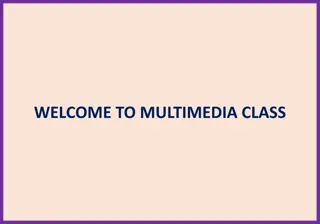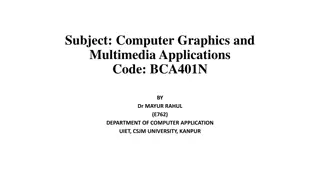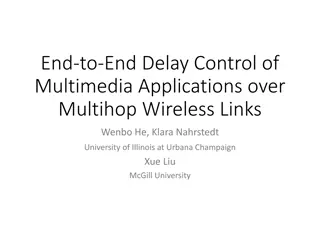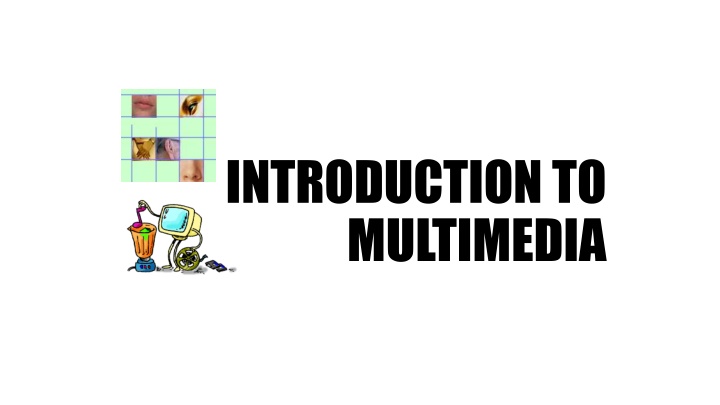
Multimedia: Elements and Definition
Dive into the world of multimedia with this detailed guide covering the definition of multimedia, its components like text, graphics, video, audio, and animation, and how they are combined to create interactive user experiences.
Download Presentation

Please find below an Image/Link to download the presentation.
The content on the website is provided AS IS for your information and personal use only. It may not be sold, licensed, or shared on other websites without obtaining consent from the author. If you encounter any issues during the download, it is possible that the publisher has removed the file from their server.
You are allowed to download the files provided on this website for personal or commercial use, subject to the condition that they are used lawfully. All files are the property of their respective owners.
The content on the website is provided AS IS for your information and personal use only. It may not be sold, licensed, or shared on other websites without obtaining consent from the author.
E N D
Presentation Transcript
INTRODUCTION TO MULTIMEDIA
What is Multimedia? Derived from the word Multi and Media Multi Many, Multiple, Many or more than one MULTI Media Distribution tool & information presentation text, graphic, voice, images, music and etc. Medium of Communication MEDIA
Definition of Multimedia Multimedia is media and content that uses a combination of different content forms. The term is used in contrast to media which only use traditional forms of printed or hand-produced material. Multimedia is a combination of text, graphic, sound, animation, and video that is delivered interactively to the user by electronic or digitally manipulated means. TEXT GRAPHIC MULTIMEDIA VIDEO AUDIO ANIMATION
5 Elements of Multimedia A broad term for something that contains words to express something. Text is the most widely used and flexible means of presenting information on screen and conveying ideas. Like each element of the multimedia design, effective use of text can either direct users/readers attention or divert it. Text is the most basic essential element of presenting the information in multimedia. A good choice of words could help convey the intended message to the users (keywords). Used in contents, menus, navigational buttons TEXT
5 Elements of Multimedia GRAPHIC TEXT TEXT MULTIMEDIA VIDEO AUDIO ANIMATION Example
5 Elements of Multimedia GRAPHIC TEXT GRAPHIC MULTIMEDIA VIDEO AUDIO ANIMATION Two-dimensional figure or illustration Could be produced manually (by drawing, painting, carving, etc.) or by computer graphics technology. Used in multimedia to show more clearly what a particular information is all about (diagrams, picture).
5 Elements of Multimedia GRAPHIC TEXT GRAPHIC MULTIMEDIA VIDEO AUDIO ANIMATION A Picture means a thousand words
5 Elements of Multimedia GRAPHIC TEXT GRAPHIC MULTIMEDIA VIDEO AUDIO ANIMATION Example
5 Elements of Multimedia GRAPHIC TEXT AUDIO MULTIMEDIA VIDEO AUDIO ANIMATION Produced by vibration, as perceived by the sense of hearing. In multimedia, audio could come in the form of speech, sound effects and also music score.
5 Elements of Multimedia GRAPHIC TEXT AUDIO MULTIMEDIA VIDEO AUDIO ANIMATION Example
5 Elements of Multimedia GRAPHIC TEXT ANIMATION MULTIMEDIA VIDEO AUDIO ANIMATION The illusion of motion created by the consecutive display of images of static elements. In multimedia, animation is used to further enhance / enriched the experience of the user to further understand the information conveyed to them.
5 Elements of Multimedia GRAPHIC TEXT ANIMATION MULTIMEDIA VIDEO AUDIO ANIMATION Example
5 Elements of Multimedia GRAPHIC TEXT VIDEO MULTIMEDIA VIDEO AUDIO ANIMATION Is the technology of capturing, recording, processing, transmitting, and reconstructing moving pictures. Video is more towards photo realistic image sequence / live recording as in comparison to animation. Video also takes a lot of storage space. So plan carefully before you are going to use it.
Interactive Multimedia When the user is given the option of controlling the elements. Hyper Media A combination of hypertext, graphics, audio, video, (linked elements) and interactivity culminating in a complete, non-linear computer-based experience.
Example Interactive Multimedia
Example Hyper Text and Hyper Media Main Page 1. Video link 2. Image link 3. Audio Link
Linear VS Non-Linear LINEAR LINEAR A Multimedia Project is identified as Linear when: It is not interactive User have no control over the content that is being showed to them. Example: A movie A non-interactive lecture / demo show
Linear VS Non-Linear NON NON- -LINEAR LINEAR A Multimedia Project is identified as Non-Linear when: It is interactive Users have control over the content that is being showed to them. Users are given navigational control Example: Games Courseware Interactive CD
Multimedia presentations can be live or recorded: A recorded presentation may allow interactivity via a navigation system; A live multimedia presentation may allow interactivity via an interaction with the presenter or performer.
characteristics Multimedia presentations can be viewed in person on stage, projected, transmitted, or played locally with a media player. Broadcasts and recordings can be either analog or digital electronic media technology. The various formats of technological or digital multimedia may be intended to enhance the users' experience. Online multimedia is increasingly becoming object-oriented and data-driven, enabling applications with collaborative end-user innovation and personalization on multiple forms of content over time.
ADVANTAGES Multimedia enhances the effect of text presentations. Improves the quality of presentation and retains the attention of audience. It can be used for educational as well as entertainment purpose. It is quick and easier to operate for the instructor. Multimedia presentations can be modified very easily. Multimedia is Entertaining as Well as Educational. Addresses multiple learning styles(visual, verbal, physical etc.) Uses a variety of media elements to reinforce one idea Activates multiple senses creating rich experiences Improves retention
Dis-advantages:- Non-interactive if one-way, no feedback. Complex to create. Time consuming. Use of multimedia is expensive.

